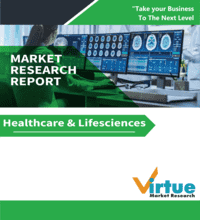Bone Growth Stimulators Market Size (2025 – 2030)
The Bone Growth Stimulators Market was valued at $2314.5 million and is projected to reach a market size of $3552 million by the end of 2030. Over the forecast period of 2025-2030, the market is projected to grow at a CAGR of 8.9%.
Bone growth stimulators are a significant advancement in the science of orthopedic interventions, providing an extraneous or near-extraneous means for promoting bone repair and healing. Bone growth stimulators are specifically effective for delayed fracture patients, spinal fusions, or patients suffering from osteoporosis. Their efficacy in inducing natural bone growth through the stimulation of electricity, ultrasonics, or magnetism has placed them as an essential element in contemporary bone repair therapy. Cognitive Market Research observed that the market is comprised of three major product types, including external bone growth stimulators, implantable bone growth stimulators, and ultrasound bone growth stimulators. Among these, external bone growth stimulators are leading because they are non-invasive and can be easily used. Implantable devices, on the other hand, are picking up for their effectiveness in certain situations, such as complicated spinal fusions or non-union fractures. The market for bone growth stimulators is also marked by increasing focus on innovation. Companies are creating sophisticated devices with enhanced portability, connectivity, and customization to promote patient compliance and outcomes. Furthermore, the transition towards home-based care solutions is driving the uptake of small and easy-to-use stimulators.
Key Market Insights:
- Bone growth stimulation devices led the market in 2023, capturing a high revenue share because of the growing need for non-invasive treatments.
- Spinal fusion surgeries were the highest application segment, capturing a 47% market share in 2023.
- North America dominated the market with a share of about 42% of the overall revenue share in 2023, propelled by sophisticated healthcare infrastructure and high rates of orthopedic diseases.
- The Asia-Pacific market is expected to have the fastest growth rate, with a CAGR of more than 6.8% during the period from 2023 to 2032, due to rising healthcare expenditures and a growing geriatric population.
Bone Growth Stimulators Market Key Drivers:
Orthopedic Diseases Are Increasing Internationally, Fueling Demand for Bone Healing Treatments.
The growing prevalence of bone disorders, including osteoporosis, fractures, and spinal disorders, is a key driver for the bone growth stimulators market. With the aging of the global population, the vulnerability to these disorders increases, resulting in increased demand for efficient treatment methods. Osteoporosis, for example, has an estimated 200 million affected women globally, leading to a high number of fractures every year. This increased burden highlights the necessity for better bone healing technologies, thus driving the use of bone growth stimulators.
Technological Advances Are Making Bone Growth Devices Smarter and More Affordable.
Ongoing advances in medical technology have resulted in more effective and easier-to-use bone growth stimulation devices. Current stimulators are also increasingly portable, non-invasive, and wireless-friendly, boosting the compliance and quality of patient results. The incorporation of intelligent sensors and real-time monitoring functions in stimulators can provide tailored treatment plans that ride the wider tide of personalized medicine. Apart from enhancing the quality of bone healing, such progress in technology boosts the potential therapeutic applications of stimulators for orthopedic conditions.
Patient Trend Towards Non-Invasive Therapies Drives Market Growth for Stimulators.
Increasing patient demand for non-invasive and minimally invasive therapies exists because of their attendant advantages, including fewer surgical risks, quicker recovery times, and lower post-operative complications. Bone growth stimulators present a non-invasive alternative to conventional surgical treatment and are therefore appealing to both patients and practitioners. This move towards minimally invasive treatments is spurred by the need for better patient experiences and outcomes, further boosting the market expansion of bone growth stimulators.
Bone Growth Stimulators Market Restraints and Challenges:
High Costs, Limited Reimbursement, Safety Concerns, and Regulatory Hurdles Impede Market Expansion and restrict widespread adoption and slow innovation in the bone growth stimulators market.
The bone growth stimulators market is subject to some major restraints and challenges that affect its growth and widespread use. One of the major concerns is that there is limited medical reimbursement for products of bone stimulation. In most nations, stringent criteria need to be fulfilled for such devices to qualify for coverage by an insurer, and some private insurers do not cover it. This unreimbursed treatment may discourage both patients and medical professionals from seeking these treatments, thus discouraging market growth. Another significant issue is the use of expensive bone growth stimulation devices and procedures. The high cost may pose a limitation to access, especially in low- and middle-income nations where patients cannot afford such procedures. The financial limitation closes the market potential of the patients and slows down market penetration. Moreover, the market is limited by the possible side effects associated with some bone growth stimulators, like Bone Morphogenetic Proteins (BMPs). Side effects, such as tissue edema, implant dislodgement, and male infertility, have been documented, causing concern among patients and medical practitioners. Such safety concerns require careful monitoring and may result in a reluctance to embrace such therapies.
In addition, rigorous regulatory approval procedures are a challenge to market expansion. The intricate and labor-intensive process of securing necessary approvals can hold up the launch of new products and restrict innovation in the sector. Manufacturers need to navigate these regulatory environments cautiously to comply and successfully enter the market.
Bone Growth Stimulators Market Opportunities:
Emerging Therapies, Home-Based Care, and Asia-Pacific Expansion Are Opening New Avenues for Growth, Innovation, and Accessibility in the Global Bone Growth Stimulators Market.
The bone growth stimulators market is also set to see tremendous growth due to various opportunities emerging. The growing use of platelet-rich plasma (PRP) therapy in orthopedic procedures offers a significant opportunity for growth. PRP's proven ability to drive tissue regeneration has seen it applied in treating musculoskeletal trauma, arthritis, and chronic tendinitis, thus expanding the market further. Also, the growing demand for in-home healthcare options has fueled innovation towards compact and easy-to-use bone growth stimulation equipment, thereby boosting patient adherence and increasing the market size. Moreover, the Asia-Pacific market has huge potential for growth due to high-speed urbanization, growing healthcare expenditure, and higher adoption of state-of-the-art medical technology. These factors combined are conducive to a positive climate for the bone growth stimulators market, promoting innovation and ease of access to advanced orthopedic care.
BONE GROWTH STIMULATORS MARKET REPORT COVERAGE:
|
REPORT METRIC |
DETAILS |
|
Market Size Available |
2024 - 2030 |
|
Base Year |
2024 |
|
Forecast Period |
2025 - 2030 |
|
CAGR |
8.9% |
|
Segments Covered |
By Product Type, end user, application, and Region |
|
Various Analyses Covered |
Global, Regional & Country Level Analysis, Segment-Level Analysis, DROC, PESTLE Analysis, Porter’s Five Forces Analysis, Competitive Landscape, Analyst Overview on Investment Opportunities |
|
Regional Scope |
North America, Europe, APAC, Latin America, Middle East & Africa |
|
Key Companies Profiled |
Medtronic plc, Zimmer Biomet Holdings, Inc., DePuy Synthes, Bioventus LLC, Ossatec Benelux Ltd., DJO Global, Inc., Stryker Corporation, Orthofix Medical Inc., Arthrex, Inc., IGEA |
Bone Growth Stimulators Market Segmentation:
Bone Growth Stimulators Market Segmentation: By Product Type
- Bone Growth Stimulation Devices
- Bone Morphogenetic Proteins (BMPs)
- Platelet-rich plasma (PRP)
In the market for bone growth stimulators, bone growth stimulation devices have been leading, largely because they are not invasive and are highly effective for treating orthopedic conditions. These devices held the highest revenue share in 2023, stimulated by rising cases of bone and joint disorders and a preference for minimally invasive procedures.
On the other hand, platelet-rich plasma (PRP) is the fastest-growing segment. The increased popularity of PRP can be attributed to its potential to promote bone and soft tissue healing, providing a less invasive treatment with promising results in regenerative medicine. The trend is a sign of a larger movement towards biological treatments in orthopedic medicine.
Bone Growth Stimulators Market Segmentation: By Application
- Spinal Fusion Surgeries
- Delayed Union and Nonunion Bone Fractures
- Oral and Maxillofacial Surgeries
- Orthopedic Trauma Surgeries
In the market for bone growth stimulators, spinal fusion operations are the largest application segment, fueled by the rising incidence of spinal disorders and the increasing rate of spinal fusion procedures worldwide. Bone growth stimulators are widely used in such operations to increase the rate of fusion, shorten recovery time, and benefit the patient.
Conversely, the delayed union and nonunion bone fractures segment is growing strongly, driven by the increasing number of fractures and trauma cases globally. The growing incidence of road accidents and sports injuries has increased the demand for efficient bone healing solutions, thus driving the use of bone growth stimulators in treating such difficult fracture cases. Oral and maxillofacial surgeries are a smaller part of the market yet increases in technology and increasing popularity of computer-assisted surgery are improving the performance of bone growth stimulators in these procedures, which is all helping their slow expansion in the market.
Bone Growth Stimulators Market Segmentation: By End-User
- Hospitals and Clinics
- Ambulatory Surgical Centers (ASCs)
- Home Care Settings
- Academic and Research Institutes
Historically, hospitals and clinics dominate the bone growth stimulators market with the largest share due to the tremendous volume of orthopedic procedures and patient admissions for traumatic injuries, spinal disease, and fractures. Their dominance is furthered by the extensive medical facilities and specialized medical professionals available in these facilities.
The segment of home care settings, though, is growing as the fastest-growing sector. This growth is fueled by technological progress in portable and easy-to-use bone growth stimulation equipment, allowing patients to conveniently administer treatments in the comfort of their homes. The growing popularity of home-based care, as well as enhanced healthcare awareness, drives this trend. Moreover, ambulatory surgical centers (ASCs) are becoming increasingly popular because they are cost-effective and efficient in conducting outpatient orthopedic surgeries, which attract patients looking for alternatives to hospital-based surgery. Whereas research and academic centers are very important in the innovation and clinical testing of bone growth technology, their actual contribution to the market is relatively minor.
Bone Growth Stimulators Market Segmentation: By Region
- North America
- Europe
- Asia Pacific
- South America
- Middle East and Africa
The international bone growth stimulators market shows unique regional differences in market share. North America dominates the market with a share of about 41% of the overall revenue in 2024, spurred by sophisticated healthcare infrastructure and high incidence of orthopedic diseases.
Europe ranks second with a market share of about 30%, aided by an aging population and heightened awareness of bone health. The Asia-Pacific region shares approximately 20% of the market, witnessing high growth on account of growing healthcare facilities and increasing cases of bone disorders. Other regions such as Latin America and the Middle East & Africa contribute the remaining 9%, indicating emerging healthcare advancements and rising use of medical technologies.
COVID-19 Impact Analysis on the Bone Growth Stimulators Market:
The COVID-19 pandemic had a significant effect on the bone growth stimulators market, mainly because of the mass delay of elective procedures as healthcare systems allocated priority to COVID-19 patients and saved resources. This resulted in a significant reduction in procedures that used bone growth stimulators. Supply chain disruptions also caused manufacturing and distribution issues, leading to device shortages. Yet the pandemic also hastened home-based care solution adoption, with the need for portable and easy-to-use bone growth stimulation devices to enable remote treatment. As vaccinations picked up and healthcare services resumed, the market recovered, undertaking the catch-up procedure backlog and responding to the revived demand for bone growth stimulators.
Trends/Developments:
The market for bone growth stimulators is undergoing huge developments based on technological advancements and changing patient tastes. Companies are creating wireless and portable bone growth stimulators to improve patient ease of use and compliance. They usually feature intelligent aspects like wireless connectivity with smartphones and remote tracking, following the general trend of incorporating digital healthcare solutions in medical devices.
Furthermore, there is an increasing focus on non-invasive therapies, with healthcare providers and patients preferring external stimulators over invasive methods due to ease of application and lower chances of complications. The market is also experiencing a higher uptake of personalized treatment modalities, individualizing bone growth stimulation therapies based on the needs and conditions of the patient.
Also, the incidence of sports injuries and orthopedic disorders has grown in recent times, further necessitating better solutions for bone healing. Such growth is therefore promoting research and development in the sector. These combined trends form the dynamic patient-centric landscape for bone growth stimulators.
Key Players:
- Medtronic plc
- Zimmer Biomet Holdings, Inc.
- DePuy Synthes
- Bioventus LLC
- Ossatec Benelux Ltd.
- DJO Global, Inc.
- Stryker Corporation
- Orthofix Medical Inc.
- Arthrex, Inc.
- IGEA
Chapter 1. Bone Growth Stimulators Market – SCOPE & METHODOLOGY
1.1. Market Segmentation
1.2. Scope, Assumptions & Limitations
1.3. Research Methodology
1.4. Primary Source
1.5. Secondary Source
Chapter 2. Bone Growth Stimulators Market – EXECUTIVE SUMMARY
2.1. Market Size & Forecast – (2025 – 2030) ($M/$Bn)
2.2. Key Trends & Insights
2.2.1. Demand Side
2.2.2. Supply Side
2.3. Attractive Investment Propositions
2.4. COVID-19 Impact Analysis
Chapter 3. Bone Growth Stimulators Market – COMPETITION SCENARIO
3.1. Market Share Analysis & Company Benchmarking
3.2. Competitive Strategy & Product Type Scenario
3.3. Competitive Pricing Analysis
3.4. Supplier-Distributor Analysis
Chapter 4. Bone Growth Stimulators Market - ENTRY SCENARIO
4.1. Regulatory Scenario
4.2. Case Studies – Key Start-ups
4.3. Customer Analysis
4.4. PESTLE Analysis
4.5. Porters Five Force Model
4.5.1. Bargaining Power of Suppliers
4.5.2. Bargaining Powers of Customers
4.5.3. Threat of New Entrants
4.5.4. Rivalry among Existing Players
4.5.5. Threat of Substitutes Players
4.5.6. Threat of Substitutes
Chapter 5. Bone Growth Stimulators Market - LANDSCAPE
5.1. Value Chain Analysis – Key Stakeholders Impact Analysis
5.2. Market Drivers
5.3. Market Restraints/Challenges
5.4. Market Opportunities
Chapter 6. Bone Growth Stimulators Market – By Product Type
6.1 Introduction/Key Findings
6.2 Bone Growth Stimulation Devices
6.3 Bone Morphogenetic Proteins (BMPs)
6.4 Platelet-rich plasma (PRP)
6.5 Y-O-Y Growth trend Analysis By Product Type :
6.6 Absolute $ Opportunity Analysis By Product Type :, 2025-2030
Chapter 7. Bone Growth Stimulators Market – By Application
7.1 Introduction/Key Findings
7.2 Spinal Fusion Surgeries
7.3 Delayed Union and Nonunion Bone Fractures
7.4 Oral and Maxillofacial Surgeries
7.5 Orthopedic Trauma Surgeries
7.6 Y-O-Y Growth trend Analysis By Application
7.7 Absolute $ Opportunity Analysis By Application , 2025-2030
Chapter 8. Bone Growth Stimulators Market – By End-User
8.1 Introduction/Key Findings
8.2 Hospitals and Clinics
8.3 Ambulatory Surgical Centers (ASCs)
8.4 Home Care Settings
8.5 Academic and Research Institutes
8.6 Y-O-Y Growth trend Analysis End-User
8.7 Absolute $ Opportunity Analysis End-User , 2025-2030
Chapter 9. Bone Growth Stimulators Market, BY GEOGRAPHY – MARKET SIZE, FORECAST, TRENDS & INSIGHTS
9.1. North America
9.1.1. By Country
9.1.1.1. U.S.A.
9.1.1.2. Canada
9.1.1.3. Mexico
9.1.2. By Application
9.1.3. By End-User
9.1.4. By Product Type
9.1.5. Countries & Segments - Market Attractiveness Analysis
9.2. Europe
9.2.1. By Country
9.2.1.1. U.K.
9.2.1.2. Germany
9.2.1.3. France
9.2.1.4. Italy
9.2.1.5. Spain
9.2.1.6. Rest of Europe
9.2.2. By Application
9.2.3. By End-User
9.2.4. By Product Type
9.2.5. Countries & Segments - Market Attractiveness Analysis
9.3. Asia Pacific
9.3.1. By Country
9.3.1.1. China
9.3.1.2. Japan
9.3.1.3. South Korea
9.3.1.4. India
9.3.1.5. Australia & New Zealand
9.3.1.6. Rest of Asia-Pacific
9.3.2. By Application
9.3.3. By End-User
9.3.4. By Product Type
9.3.5. Countries & Segments - Market Attractiveness Analysis
9.4. South America
9.4.1. By Country
9.4.1.1. Brazil
9.4.1.2. Argentina
9.4.1.3. Colombia
9.4.1.4. Chile
9.4.1.5. Rest of South America
9.4.2. By End-User
9.4.3. By Application
9.4.4. By Product Type
9.4.5. Countries & Segments - Market Attractiveness Analysis
9.5. Middle East & Africa
9.5.1. By Country
9.5.1.1. United Arab Emirates (UAE)
9.5.1.2. Saudi Arabia
9.5.1.3. Qatar
9.5.1.4. Israel
9.5.1.5. South Africa
9.5.1.6. Nigeria
9.5.1.7. Kenya
9.5.1.8. Egypt
9.5.1.9. Rest of MEA
9.5.2. By End-User
9.5.3. By Application
9.5.4. By Product Type
9.5.5. Countries & Segments - Market Attractiveness Analysis
Chapter 10. Bone Growth Stimulators Market – Company Profiles – (Overview, Packaging Product Portfolio, Financials, Strategies & Developments)
10.1 Medtronic plc
10.2 Zimmer Biomet Holdings, Inc.
10.3 DePuy Synthes
10.4 Bioventus LLC
10.5 Ossatec Benelux Ltd.
10.6 DJO Global, Inc.
10.7 Stryker Corporation
10.8 Orthofix Medical Inc.
10.9 Arthrex, Inc.
10.10 IGEA
Download Sample
Choose License Type
2500
4250
5250
6900
Frequently Asked Questions
Growth is fueled by rising orthopedic conditions, aging populations, advancements in non-invasive technologies, and increasing preference for outpatient and home-based treatment solutions
Hospitals and clinics dominate due to high surgical volumes and access to advanced equipment, while home care settings are growing fast due to patient comfort and post-operative recovery support
Innovations like wearable, wireless, and portable stimulators with smart sensors are improving treatment efficiency and patient compliance, supporting wider adoption across medical institutions
North America leads due to high healthcare spending, strong orthopedic device infrastructure, and rapid adoption of advanced medical technologies
Trends include PRP-based therapies, AI integration in healing devices, growing demand for personalized orthopedic care, and expanding applications in sports medicine and trauma recovery.



